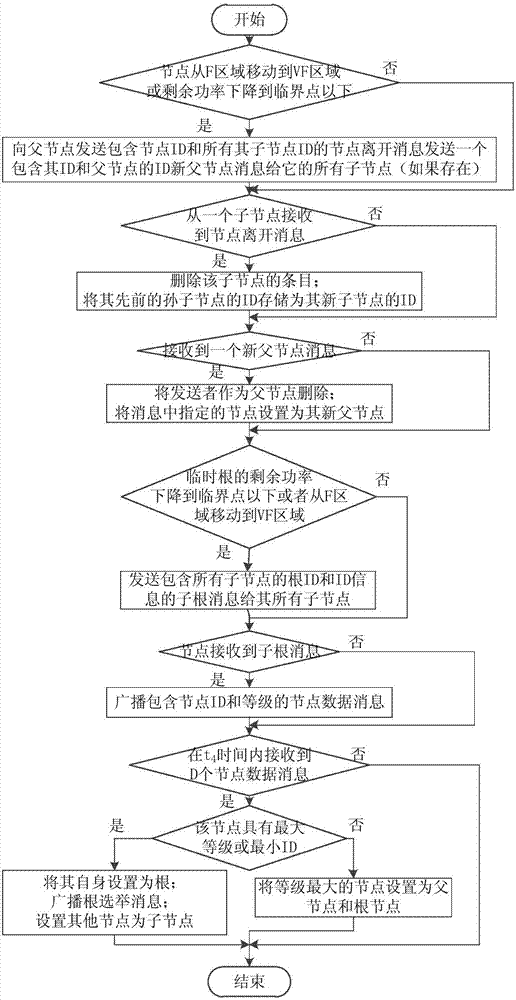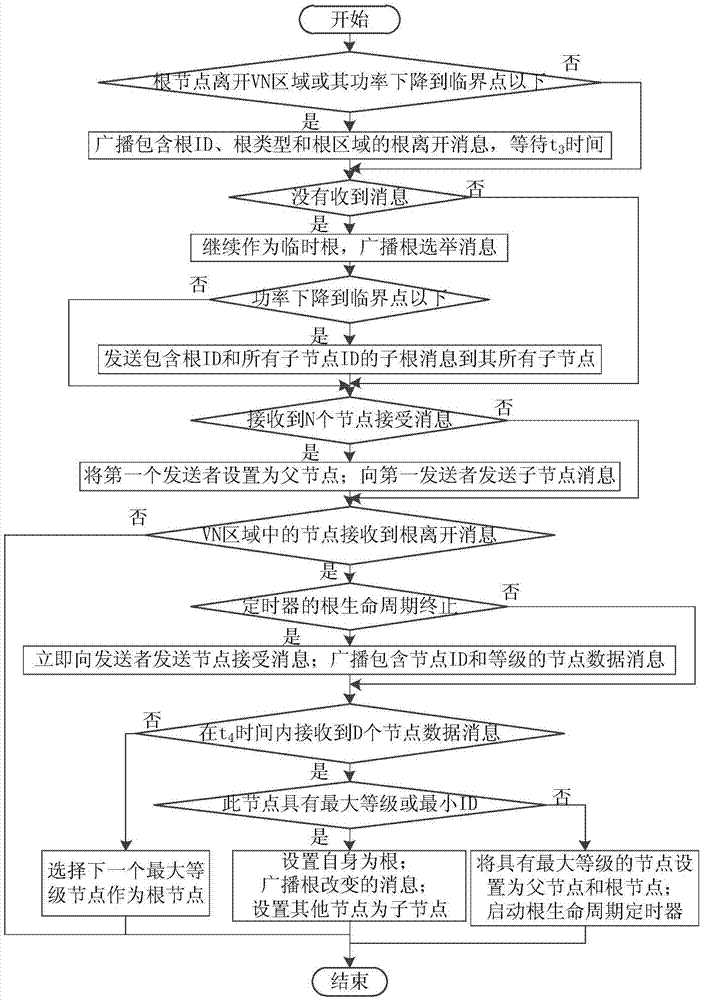Target tracking method based on transport tree in wireless sensor network
A wireless sensor and target tracking technology, applied in the field of target tracking based on the transmission tree, can solve the problems of reduced network life, increased energy loss of wireless sensor networks, etc., to achieve the effects of reduced energy loss, reduced data volume, and improved quality
- Summary
- Abstract
- Description
- Claims
- Application Information
AI Technical Summary
Problems solved by technology
Method used
Image
Examples
Embodiment Construction
[0060] The present invention will be further described in detail with reference to the accompanying drawings. The present invention first proposes a system model of a wireless sensor network. Assume that the wireless sensor network is composed of n sensor nodes uniformly deployed in an area. Let the sensor nodes be n i , The related sensor node sequence is V={n 1 ,n 2 ,...,N i ,...,N N }, where |V|=N. The sensor nodes and the underlying network model are as follows:
[0061] 1) The sensors are randomly deployed in a certain area;
[0062] 2) There is a base station (that is, the data receiving end) far away from the square sensing area;
[0063] 3) The sensors and base stations are fixed after deployment;
[0064] 4) All nodes are isomorphic and have the same function;
[0065] 5) Each node is assigned a unique identifier (ID);
[0066] 6) Nodes can change their transmission range by changing the transmission power as needed, that is, nodes have a variable communication radius;
[0067...
PUM
 Login to View More
Login to View More Abstract
Description
Claims
Application Information
 Login to View More
Login to View More - R&D
- Intellectual Property
- Life Sciences
- Materials
- Tech Scout
- Unparalleled Data Quality
- Higher Quality Content
- 60% Fewer Hallucinations
Browse by: Latest US Patents, China's latest patents, Technical Efficacy Thesaurus, Application Domain, Technology Topic, Popular Technical Reports.
© 2025 PatSnap. All rights reserved.Legal|Privacy policy|Modern Slavery Act Transparency Statement|Sitemap|About US| Contact US: help@patsnap.com



